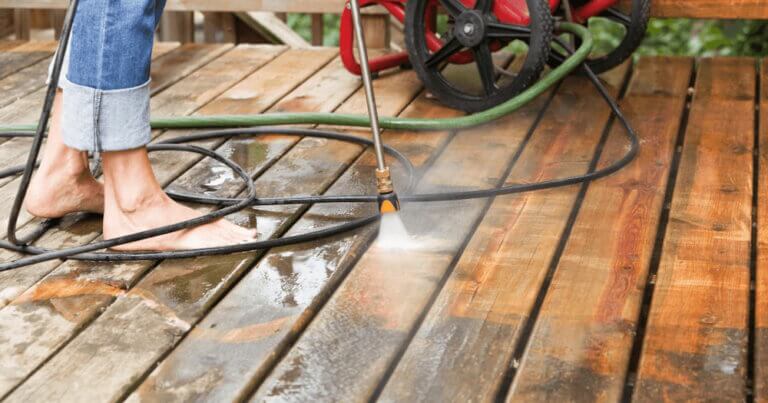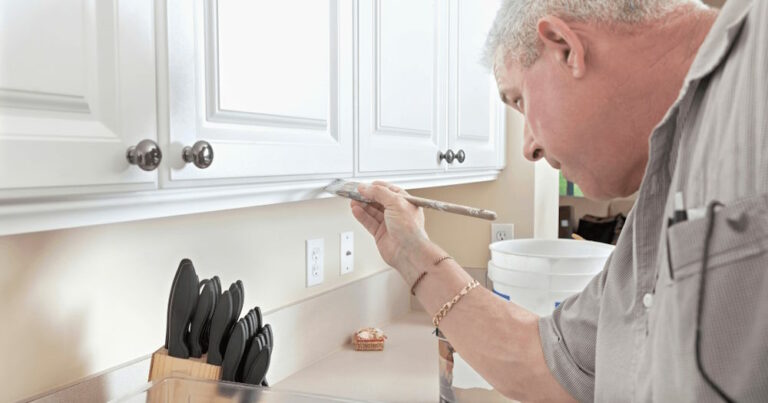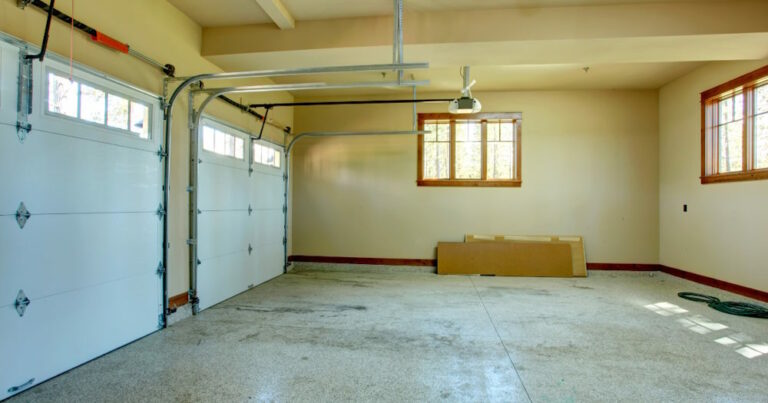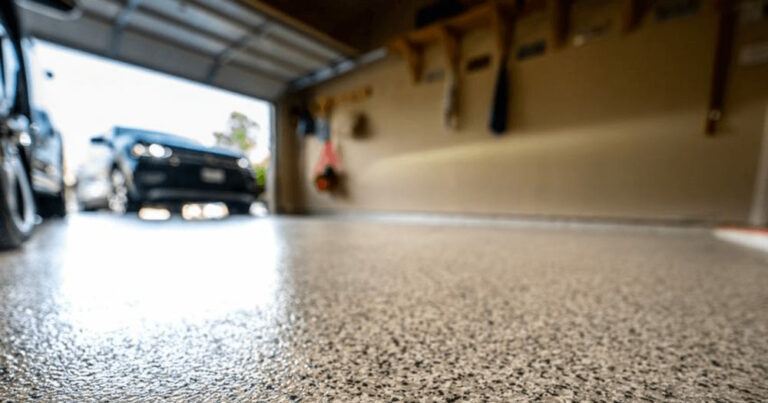If you’re considering epoxy flooring for your space, one of the most important questions you may have is how long does epoxy floor last. Epoxy floors are known for their durability and longevity, but how long can you realistically expect them to hold up?
In this article, we’ll explore the typical lifespan of epoxy flooring, as well as the various factors that can impact its durability. We also provide tips for maintaining and enhancing the lifespan of your epoxy floors, whether they are installed in a commercial, industrial, or residential setting.
Key Takeaways
- Epoxy floor coatings can last for many years when properly installed and maintained.
- Factors that affect the lifespan of epoxy flooring include proper installation, usage, maintenance, and environmental conditions.
- Regular maintenance can help extend the lifespan of your epoxy floor coating, and there are various ways to enhance their durability.
- Epoxy flooring is a popular option for both commercial and residential settings.
- Understanding the lifespan of epoxy floors can help you make informed decisions and get the most out of your investment.
Understanding Epoxy Flooring
If you are considering epoxy flooring for your home or business, it’s important to understand what it is and its benefits. Epoxy flooring is a type of flooring made by mixing a resin with a hardener, creating a durable, glossy surface that is resistant to wear and tear.
Epoxy flooring is popular in many industries due to its durability and other benefits, such as:
- Resistance to chemicals, stains, and abrasions
- Easy to clean and maintain
- Can be installed in a variety of colors and designs
- Cost-effective compared to other flooring options
These qualities make epoxy flooring a great choice for high-traffic areas or locations that are prone to spills or heavy equipment use.
Factors Affecting Epoxy Floor Lifespan

The longevity of an epoxy floor depends on various factors, including:
| Factor | Description |
| Proper Installation | Epoxy floors require precise installation procedures to ensure their durability. The installation process includes surface preparation, mixing the epoxy components, and applying the mixture in even coats. Any mistakes or shortcuts in the installation process can compromise the epoxy floor’s lifespan. |
| Usage | Epoxy floors can withstand many uses, but heavy equipment or sharp objects can damage the surface. The level of usage, including foot traffic, the weight of objects placed on the floor, and frequent movement, can cause wear and tear. |
| Maintenance | Proper maintenance is essential to extend the lifespan of epoxy floors. Failing to clean the surface regularly or using harsh chemicals can damage the surface of the floor. Neglecting to address cracks or chips as soon as they occur can also shorten the lifespan of the floor. |
| Environmental Conditions | Epoxy floors can experience damage from humidity, UV rays, and extreme temperature changes. The conditions of the surrounding environment must be considered in the installation and maintenance of epoxy floors to ensure optimal durability. |
Overall, the lifespan of an epoxy floor can vary widely depending on these factors. While proper installation and maintenance can help extend the life of an epoxy floor, factors such as frequent usage or exposure to harsh environmental conditions can shorten the lifespan of these floors.
Typical Lifespan of Epoxy Flooring
Epoxy floors are known for their exceptional durability, which makes them a popular choice for various settings, including commercial, industrial, and residential spaces. The longevity of an epoxy floor depends on several factors, including the quality of the installation, usage and maintenance, and the environmental conditions of the area it’s installed in.
Under normal conditions, epoxy floors can last anywhere from 5 to 10 years or even longer. However, this can vary depending on the above-mentioned factors. For instance, epoxy floors in high-traffic areas may experience wear and tear faster and require more frequent maintenance or recoating than those in low-traffic areas.
Overall, with proper installation, usage, maintenance, and recoating, epoxy floors can last for a long time, making them a wise investment for both commercial and residential spaces.
Durability of Epoxy Floors in High-Traffic Areas
Epoxy floors are a popular choice for high-traffic areas, such as commercial spaces and industrial facilities. But how well do they hold up under heavy foot traffic and equipment use?
The good news is that epoxy floors are incredibly durable and can withstand the wear and tear of high-traffic areas. They are resistant to scratches, stains, and chemicals, making them an ideal option for spaces where spills and accidents are common.
However, it’s essential to ensure that your epoxy flooring is properly installed to maximize its durability. Any flaws or mistakes during installation can compromise the integrity of the floor and shorten its lifespan.
Factors Affecting Epoxy Floor Durability in High-Traffic Areas
While epoxy floors are generally very durable, several factors can impact their longevity when installed in high-traffic areas. These factors include:
| Factor | Impact on Durability |
| Heavy equipment use | Can cause wear and tear on the surface of the floor |
| Foot traffic | Can create scratches and scuff marks on the surface of the floor |
| Moisture and humidity | Can cause the epoxy to bubble, peel, or discolor |
| Harsh chemicals | Can stain or damage the surface of the floor |
To ensure that your epoxy floor is as durable as possible in high-traffic areas, it’s important to address these factors. For example, you may need to use floor mats or proper cleaning techniques to prevent scratches and scuffs caused by foot traffic. Heavy equipment may require the installation of additional protective coatings or thicker layers of epoxy to withstand the weight and movement.
Maintenance Tips for Epoxy Flooring in High-Traffic Areas
Maintenance is also crucial for extending the lifespan of epoxy flooring in high-traffic areas. Here are some tips to help you maintain the durability and appearance of your epoxy floor:
- Sweep or vacuum the floor regularly to remove any dirt or debris that could scratch the surface
- Use a soft-bristled brush or mop to clean the floor with a pH-neutral cleaner
- Avoid using harsh chemical cleaners or abrasive tools that could damage the surface
- Place mats or runners in high-traffic areas to prevent scratches and scuff marks
By following these maintenance tips and addressing the factors that can impact the durability of epoxy floors in high-traffic areas, you can ensure that your flooring investment lasts as long as possible.
Maintaining Epoxy Flooring for Longevity
To ensure that your epoxy flooring lasts as long as possible, it’s crucial to practice regular maintenance. With proper care, your floors can remain durable and visually appealing for many years.
Cleaning and Care
Regular cleaning and care are essential for maintaining the lifespan of epoxy flooring. You should sweep or dust mop your floors daily to remove dirt, debris, and other particles that can scratch or damage the surface.
For more thorough cleaning, you can use a mild detergent or ammonia solution with warm water. Avoid using acidic or abrasive cleaners, as these can damage the epoxy surface.
Always rinse your floors thoroughly after washing and dry them with a soft towel or mop to prevent water spots.
Preventing Damage
Preventing damage is also key to extending the longevity of your epoxy floors. Heavy furniture, equipment, or tools can scratch or dent the surface, so it’s important to use protective padding or mats under these items.
You should also avoid dropping heavy objects on your floors and refrain from dragging sharp or heavy objects across the surface. These actions can cause chips, scratches, or gouges that can weaken the epoxy coating.
Addressing Issues Promptly
If you notice any signs of damage or wear, it’s important to address them promptly to prevent further deterioration. Small cracks or chips can be repaired using epoxy filler or patching compound.
For larger issues, such as peeling or delamination, you may need to hire a professional to repair or replace the flooring. Ignoring these problems can lead to more significant damage and decrease the lifespan of your epoxy floors.
By staying on top of maintenance and addressing issues promptly, you can maximize the lifespan of your epoxy flooring investment and enjoy its benefits for many years to come.
Repairing and Restoring Epoxy Floors
Epoxy floors are known for their exceptional durability and longevity, but even the best floors may require occasional repairs or restoration to maintain their visual appeal and functionality. Here are some common issues that can arise with epoxy flooring and how to address them effectively:
Cracks and Chips
Cracks and chips can occur due to heavy impact or sharp objects. Minor cracks can be filled with epoxy filler, which is applied and smoothed out using a putty knife. For larger cracks, a professional may need to be called to assess the situation and provide a proper fix.
Stains and Discoloration
Epoxy floors are highly resistant to stains, but they can still occur due to spills of harsh chemicals or oil. To clean stains, start by soaking them up with a towel or rag. Then apply a neutral cleaner and scrub the area using a soft bristled brush. Discoloration can also occur due to prolonged sun exposure. If this happens, a new topcoat or finish may be necessary.
Fading and Wear
Epoxy floors can fade or wear over time, especially in high-traffic areas. Recoating the floor with a fresh layer of epoxy can restore its glossy and vibrant finish. To do this, the surface must be thoroughly cleaned and lightly sanded to ensure proper adhesion. After the surface is prepped, apply a new layer of epoxy using a roller or squeegee, and allow it to cure for the recommended time.
Scratches and Scuffs
Minor scratches and scuffs can be easily buffed out using a fine-grit sandpaper or a soft abrasive pad. Deeper scratches may require the help of a professional to repair.
Regular maintenance and proper care can go a long way in preventing repairs or restoration of epoxy floors. However, it’s important to know how to address these issues effectively to prolong the lifespan of your epoxy flooring investment.
Enhancing Epoxy Floor Durability
While epoxy floors are known for their strength and durability, there are additional measures you can take to further enhance their longevity in high-traffic areas. Here are a few ways to boost the durability of your epoxy flooring:
| Method | Description |
| Epoxy Coatings | Adding an additional layer of epoxy coating can provide extra protection against wear and tear, as well as enhance the shine and appearance of your flooring. |
| Decorative Chips | Decorative chips can be added to the epoxy coating to enhance durability and create a unique aesthetic. |
| Anti-Slip Additives | Anti-slip additives can be mixed into the epoxy coating to provide extra traction in areas where slips and falls may be a concern. |
| UV-resistant Coatings | UV-resistant coatings can be applied to protect your epoxy floor from fading or discoloration caused by exposure to sunlight. |
In addition to these methods, there are a few other things you can do to keep your epoxy floor looking and performing its best:
- Regularly sweep and mop the floor to remove dirt and debris
- Avoid using abrasive cleaners or tools that can scratch the surface of the floor
- Fix any cracks or chips in the flooring as soon as they occur to prevent further damage
- Consider adding a wax or sealant to the surface of the floor for added protection
By taking these steps to enhance and maintain the durability of your epoxy flooring, you can help ensure that it lasts for many years while retaining its strength and appearance.
Frequently Asked Questions about Epoxy Floor Lifespan

If you’re considering installing epoxy flooring, you likely have questions about its lifespan and durability. Here are some of the most frequently asked questions about the longevity of epoxy floors:
How long do epoxy floors typically last?
When installed correctly and maintained properly, epoxy floors can last for up to 20 years or more. However, the lifespan of an epoxy floor depends on several factors, such as the quality of materials used, the installation process, and the level of foot traffic and potential abrasion.
Can epoxy floors be repaired if damaged?
Yes, in most cases, epoxy floors can be repaired if damaged. Small chips and cracks can be filled and sanded to restore the surface. If the damage is extensive, it may require a professional to assess and repair the floor.
What is the best way to maintain an epoxy floor?
The best way to maintain an epoxy flooring system is to sweep it regularly to remove dirt and debris, then mop it with a solution of warm water and mild detergent. Avoid using harsh chemicals or abrasive cleaning tools, as they can damage the surface. Additionally, it’s important to address spills and stains immediately to prevent them from setting into the material.
Can epoxy flooring be used in homes?
Yes, epoxy flooring is an excellent option for residential settings. It can be used in many areas of the home, including epoxy garage floor, basements, and even living spaces. Its durability and resistance to stains make it a popular choice for homeowners.
What environmental conditions can affect the lifespan of an epoxy floor?
Extreme temperatures and humidity levels can affect the lifespan of an epoxy floor. It’s essential to install epoxy floors in areas where temperature fluctuations are minimal and moisture levels are controlled. Additionally, exposure to UV rays from the sun can cause the epoxy to fade or discolor over time.
Can additional coatings enhance the durability of epoxy floors?
Yes, adding an additional coat of epoxy or a sealant can enhance the durability of epoxy floors. These coatings can provide an extra layer of protection against abrasion, stains, and UV rays, prolonging the lifespan of the flooring.
What are some signs that an epoxy floor needs to be repaired or restored?
Some signs that an epoxy flooring systems need to be repaired or restored include cracks, chips, and discoloration. If the surface appears dull or faded, it may also be time to consider restoring the flooring to its original shine and luster.
- Tip: Regular maintenance and addressing issues promptly can help avoid the need for extensive repairs or restoration.
With proper installation and maintenance, epoxy floors can provide a durable and long-lasting flooring solution. If you have additional questions about the lifespan of epoxy flooring or how to maintain it, contact a flooring professional for advice and guidance.
Conclusion
After exploring the lifespan of epoxy flooring, it’s clear that these floors have the potential to last for many years when installed and maintained correctly. The key to maximizing the longevity of epoxy floors is to ensure they are installed correctly, used appropriately, and regularly maintained.
If you’re interested in epoxy floor coatings, call us at Canyon Painting today!





